ASUS MeMO Pad HD7 Review: $149 Nexus 7.1 Successor & Our First Look at MediaTek's MT8125
by Anand Lal Shimpi on July 29, 2013 3:55 PM EST- Posted in
- Tablets
- Asus
- Mobile
- Android 4.2
- MeMO Pad
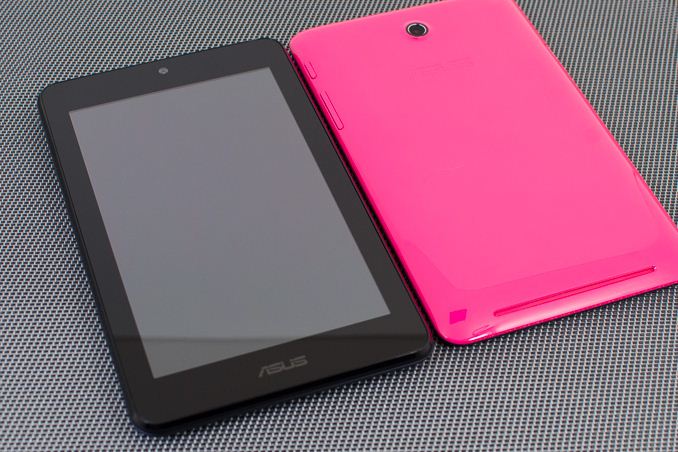
The tablet market is presently caught in a race to the bottom, at least in terms of pricing. The shift from the initial crop of 10-inch tablets to 7/8-inch models is well under way, and with that shift comes downward pricing pressure.
Even Apple isn't immune from this, with the iPad mini priced at around 65% of its bigger brother - itself being priced lower than many expected upon its introduction in 2010.
Unlike in the traditional PC industry however, huge sacrifices in display quality, user input or overall performance just aren't tolerated as well in the present tablet market. Consumers want cheaper tablets, but they can't devolve into unresponsive devices with compromised user experience. There's a certain minimum level of quality that needs to be met.
Last year Amazon, and later ASUS/Google redefined what we should expect from a $199 tablet. Amazon was the first to give us decent hardware at that price point with the original Kindle Fire, and ASUS/Google blew it out of the water with the original Nexus 7. The 7-inch tablet gave us virtual performance parity with high-end devices out at the time. Add in the latest version of Android and a decent display and all of the sudden we had a wonderful tablet option at $199.
This year ASUS and Google were both under pressure to seriously improve the Nexus 7. The combination of a better display, better WiFi and better SoC all led to an awesome device, with an unfortunately higher price point ($229). While I don't expect anyone looking for a premium 7-inch tablet to have issues with the new price point, the new Nexus 7 does run the risk of leaving us with no good option below $200.
To fill the void ASUS chose to build an updated version of the tablet that turned into the original Nexus 7: the 7-inch MeMO Pad. In many senses, the new MeMO Pad HD7 is the true replacement to last year's Nexus 7. It features a similar 1280 x 800 IPS panel, very similar dimensions, and in many cases it offers similar performance. The biggest improvement? Price. The MeMO Pad HD7 starts at $149 for a 16GB model (there's a $129 8GB model available outside of North America as well).
| ASUS 7-inch Tablet Specification Comparison | |||||
| ASUS MeMO Pad HD7 | ASUS Nexus 7 (2012) | ASUS Nexus 7 (2013) | |||
| Dimensions | 196.8 x 120.6 x 10.8mm | 198.5 x 120 x 10.45mm | 200 x 114 x 8.65mm | ||
| Chassis | Plastic + Matte or Glossy back | Plastic + Rubber back | Plastic + Soft Touch back | ||
| Display | 7-inch 1280x800 IPS | 7-inch 1280x800 IPS | 7.02-inch 1920x1200 IPS | ||
| Weight | 302g | 340 g | 290 grams (WiFi), 299 grams (LTE) | ||
| Processor | 1.2GHz MediaTek MT8125 (4 x Cortex A7) | 1.3 GHz NVIDIA Tegra 3 (T30L - 4 x Cortex A9) | 1.5 GHz Qualcomm Snapdragon S4 Pro (APQ8064) | ||
| Memory | 1GB DDR3L | 1 GB | 2 GB DDR3L | ||
| Storage | 8GB / 16GB | 8 GB / 16 GB | 16 GB / 32 GB | ||
| Battery | 15.01 Wh | 16 Wh | 15.01 Wh | ||
| WiFi/Connectivity | 802.11b/g/n, BT | 802.11b/g/n, BT, NFC | 802.11a/b/g/n, BT 4.0, NFC | ||
| Camera |
5.0 MP Rear Facing w/AF 1.2MP Front Facing |
– |
5.0 MP Rear Facing w/AF 1.2MP Front Facing |
||
| Wireless Charging | - | – | Yes (Qi Compatible) | ||
| Pricing | $129/$149 | $199/$249 |
$229/$269 (WiFi 16/32 GB) $349 (LTE) |
||
Design
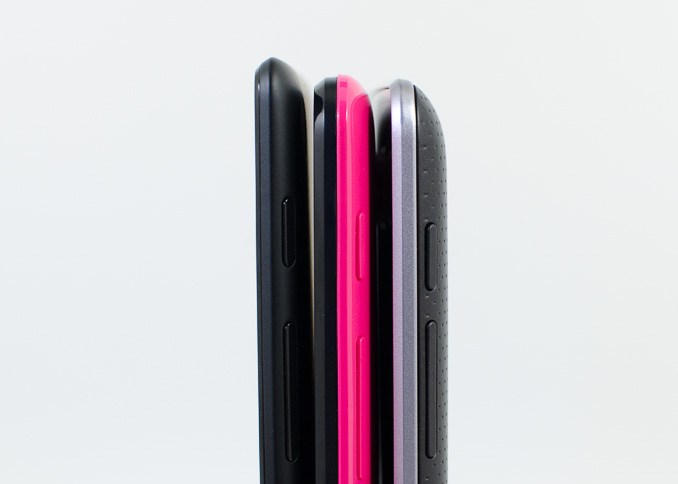
From left to right: Nexus 7 (2013), MeMO Pad HD7, Nexus 7 (2012)
The MeMO Pad HD7 is ever so slightly shorter (-1.7mm), but a hair thicker (+0.24mm) and wider (+0.6mm) than the Nexus 7. The < 2% increase in device volume comes with a reduction in weight, from 340 grams down to 302 grams. The difference appears mostly in materials choice. The rubber back of the original Nexus 7 is replaced by either a smooth matte or glossy plastic back.
ASUS offers the MeMO Pad HD7 in five different colors: white, pink, green, blue and black. The first three use glossy plastic backs while the last two have a matte look.
The potentially colorful back protrudes slightly along the edges of the tablet. It's an odd design choice, one that I can only assume makes manufacturing/assembly a bit easier. It's not a huge problem once you get used to the device, but anyone used to a Nexus 7 will notice the difference immediately.
The micro USB port gets moved up to the top of the device in the HD7, attaching it directly to the main PCB and removing the need for the long flex cable ASUS had to use in the original Nexus 7. Similarly, the audio/mic jack is located up top.
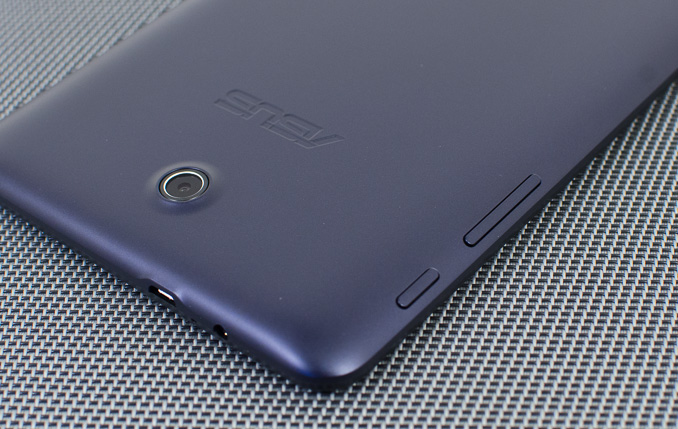
There are only three physical buttons on the MeMO Pad HD7 - power/lock, volume up and volume down. The buttons don't feel quite as mushy as they do on the new Nexus 7
Google was pretty adamant against including a microSD slot in the original Nexus 7 (preferring a combination of internal and cloud storage), but ASUS put one back in the design of the MeMO Pad HD7.
The HD7 does inherit some features from the new Nexus 7 starting with stereo speakers. Although there's a single speaker grille on the back of the MeMO Pad HD7, there are two physical speakers behind it.
Also like the new Nexus 7, there are both front (1.2MP) and rear facing (5MP) cameras in the MeMO Pad HD7.
Finally, the internal battery is nearly identical to the one used in the new Nexus 7. The model numbers are slightly different (C11P1304 vs. C11P1303 for the N7.2), but both are 3.8V 3950mAh li-polymer batteries (15Wh capacity).
I noticed some light creaking if I squeezed the corners of the HD7, but for the most part the device feels well built for a $149 tablet. You definitely lose a bit of that high end feel now that the rubber back of the Nexus 7 is gone, the entire device feels more plasticky, but again at this price point there have to be sacrifices. For what it's worth, the finish on the matte back feels a bit better than the flashier colors.
The reduced weight is nice, but I still ended up propping the tablet against something whenever I watched long TV episodes or movies.


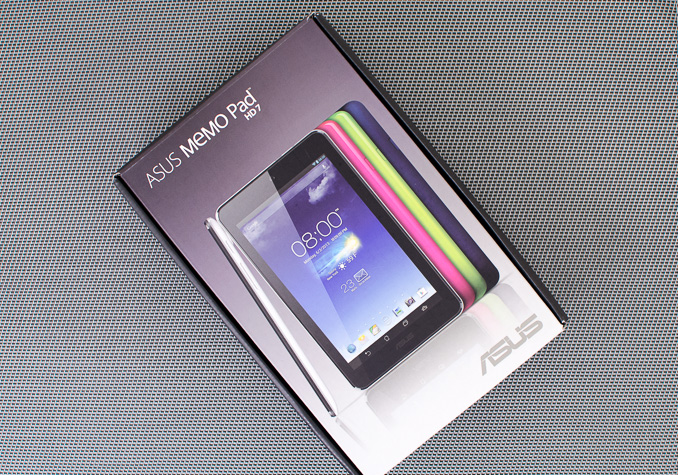
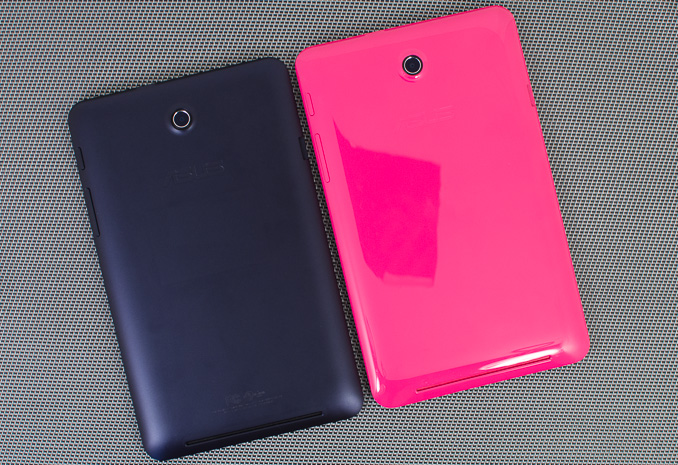
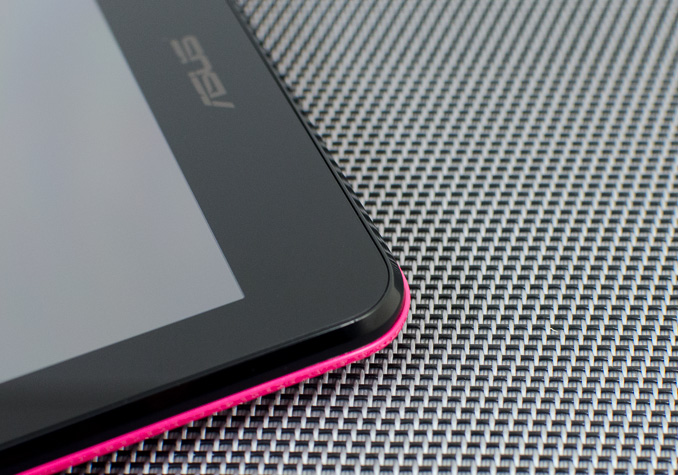
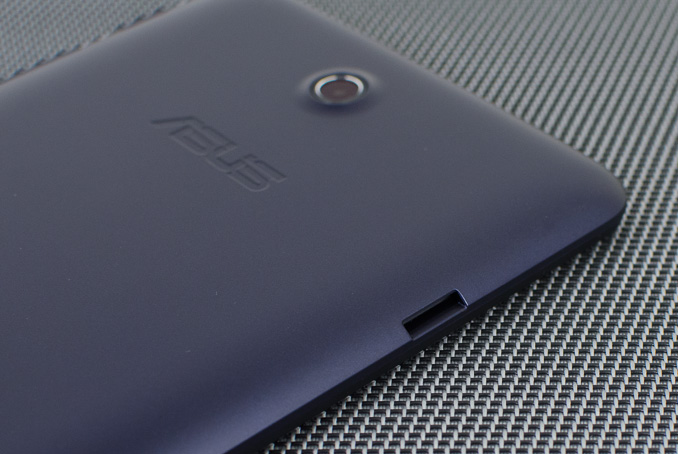
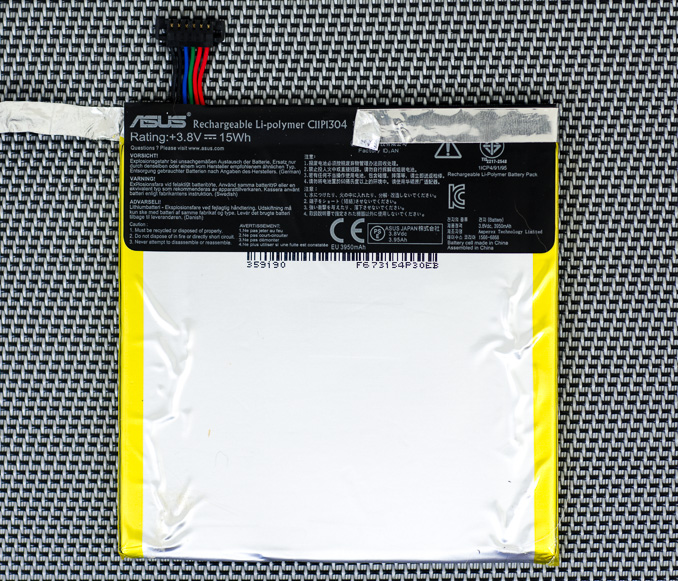








75 Comments
View All Comments
Evil804 - Wednesday, July 31, 2013 - link
have you looked into the Wifi external drives like the seagate goflex? I've been flirting with the idea of putting my 2012 Nexus 7 in the dash of my car as a Nav/media head unit, and think something like the goflex would be perfect to bring all my music with me and not have to fill up the Tablet's storage. It's a bit pricey, but it seems to be a great option.hrrmph - Wednesday, July 31, 2013 - link
Nope... but it has occurred to me that if they equip more smartphones and tablets with Wi-Fi-AC, and improve Wi-Fi interoperability between devices and PCs, then internal storage capacity concerns could be much alleviated, although not completely done away with.Wi-Fi, when implemented properly (as in more reliably and more openly so that devices are easier to be found and recognized), could be a winner on all fronts (storage, communications, etc.).
Unfortunately the only Wi-Fi to PC connection I've been able to get working has been the Samsung Kies Air PC client software. It was kludgey at best, and unworkable most of the time, so I just abandoned using it.
For your nav system, you might have better luck. At least you should have a steady power source from the car's electrical system, and therefore the devices' battery discharge times shouldn't be such a big concern.
JayGrip - Wednesday, July 31, 2013 - link
The nexus 13 has a hotspot built in. Its fast 300 mgs a min. Es file exployer lets start a ftp server. Thats how I get files on my nexus 13DanNeely - Monday, July 29, 2013 - link
In general the forward/backward compatibility requirements in the SD standard mean that larger than standard SD cards should work (SDHC in SD, and SDXC in SDHC slots). If there's a problem out of the box, it's generally that older devices only understand FAT32 while SDXC cards are formatted as exFAT by the factory. This is easy enough to fix yourself assuming you've got a PC with an SD card reader.Death666Angel - Monday, July 29, 2013 - link
Huh? Since when does the SD standard include backwards forward compatibility of the card readers? I've had plenty of card reads that didn't work with SDHC cards, no matter the file system. If what you are saying was the case, there would be no need for these new standards, as SD card readers would be fine reading up to 32GB and 64GB even.... ? :)hrrmph - Monday, July 29, 2013 - link
SDXC slots can read the modern SDXC cards as well as the older SDHC and SD cards.SDHC slots can read the specified SDHC cards and the classic SD cards.
The older slots (such as SD or SDHC) cannot read cards of a newer, more modern standard (such as SDXC).
DanNeely - Monday, July 29, 2013 - link
I've got a cheap SDHC based mediaplayer (Sansa clip zip) happily reading a 64GB SDXC card that I reformatted as FAT32. A year or two ago when most Android phones with a card slot officially topped out at 32GB SDHC, most if not all of them would take 64GB cards if you downformatted them. Except for an occasional device that had a hardcoded limit and threw a snit they almost universally would read the card at full capacity if you formatted it in a way they understood (at the cost of losing SDXC's higher theoretical speed limits).One ex:
http://androidforums.com/motorola-droid-3/416704-d...
Death666Angel - Tuesday, July 30, 2013 - link
SDXC standard was released before there was wide spread availability of SDXC cards, so most manufacturers said they only support 32GB / SDHC and it was hard for people to test if they supported more. However, just because some of those who said they only are SDHC compatible support SDXC these days does not mean that it is a general rule or that SD reader now support SDHC/SDXC cards as well. And certainly, there is no kind of forward compatibility that is in the SD-standard that I could find. So please don't go about it as if everything supports everything.hrrmph - Monday, July 29, 2013 - link
SD = 2GB maxSDHC = 32GB max
SDXC = 64GB (current) max, although specification allows up to 2TB
Asus official specs say "Micro-SD up to 32G" which would indicate that they have installed the cheaper, older Micro-SDHC capable slot with the 32GB limit.
The only hope for larger cards here is that they are mistakenly listing the 32GB limit when there might actually be a Micro-SDXC capable slot installed. This happened recently with the Blackberry Z10 and the Samsung Note 8 devices. Both were originally slated to be 32GB max, but actually ended up with the higher capacity Micro-SDXC slots which handled 64GB cards just fine.
It would be very helpful if AT would keep a 64GB Micro-SDXC card available and pop one in and see if it gets recognized when they do device reviews.
An even bigger question is, for those devices that have a Micro-SDXC slot (nearly everything Samsung makes), what happens when the 128GB cards become available? Will it be like hard drives where the device will automatically recognize the larger capacity up to the limits of the specification? If so, then having a Micro-SDXC slot would become very important for people who plan to keep and use their devices for a long time.
Reference:
https://www.asus.com/Tablets_Mobile/ASUS_MeMO_Pad_...
kmmatney - Tuesday, July 30, 2013 - link
The SD max is 4GB. I had a 4GB SD card running happily in my original Wii. The 4GB cards were hard to find, but they did work in most older devices.http://www.newegg.com/Product/Product.aspx?Item=N8...